Unfolded dices
When a dice is unfolded, it’s most generally represented as follows:
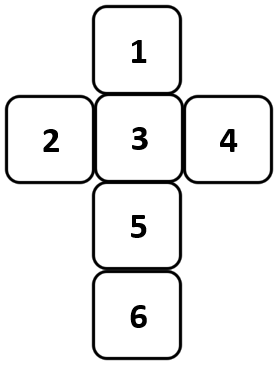
Finding opposite faces in unfolded dice
In any unfolded presentation of a dice, alternate faces in a straight line are opposite to each other.
Example 1:
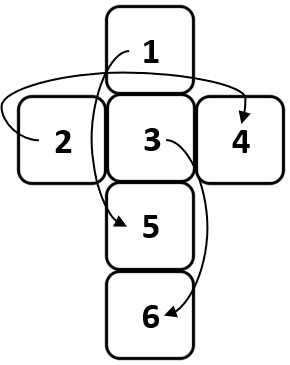 That is, pairs of opposite faces in the above unfolded dice are: 1 - 5; 3 - 6; 2 - 4.
That is, pairs of opposite faces in the above unfolded dice are: 1 - 5; 3 - 6; 2 - 4.
Example 2:
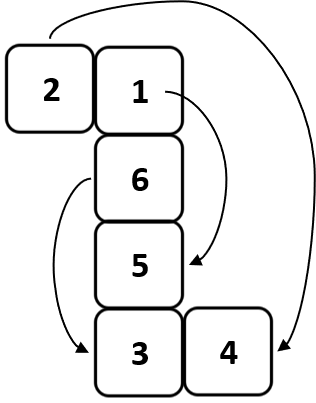 That is, pairs of opposite faces in the above unfolded dice are: 1 - 5; 3 - 6; 2 - 4.
That is, pairs of opposite faces in the above unfolded dice are: 1 - 5; 3 - 6; 2 - 4.
Q. Choose from the four answer figures, the figure that will be formed when question figure is folded into a box.
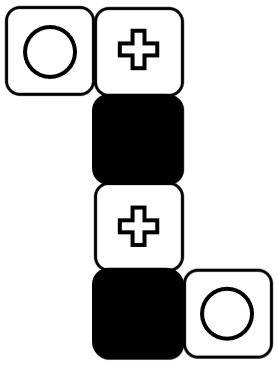

Explanation:
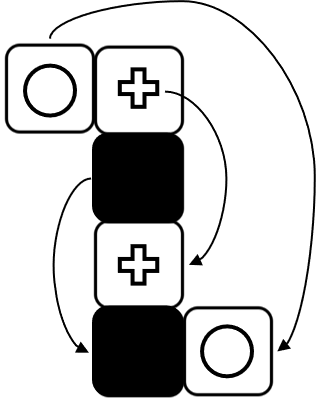 Figure in option (a) cannot be formed from the unfolded dice, because we know that the two circles must be opposite to each other. But here they are shown as adjacent faces.
Figure in option (a) cannot be formed from the unfolded dice, because we know that the two circles must be opposite to each other. But here they are shown as adjacent faces.Similarly, figures in options (b) and (c) cannot be formed from the unfolded dice, as in these figures too the opposite faces have been shown as adjacent.
So, our answer figure must be option (d)
Answer: (d)
Rearranging an unfolded dice
An unfolded dice can be rearranged to some extent, without changing the dice. As any face of a dice is attached with other four faces, therefore any face can be pushed towards its adjacent faces.
If we do these manipulations on an unfolded dice the dice will remain the same.
The wings (i.e. 2 and 4 in the given dice) can be moved up and down.
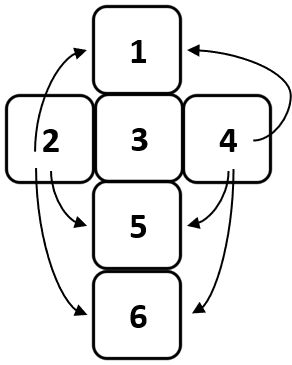 All these dices will be identical when folded.
All these dices will be identical when folded.
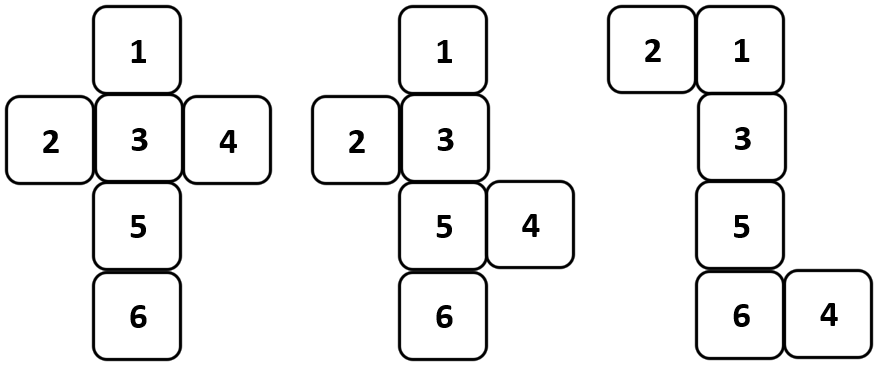
The top (i.e. 1 in the given dice) can be moved left and right
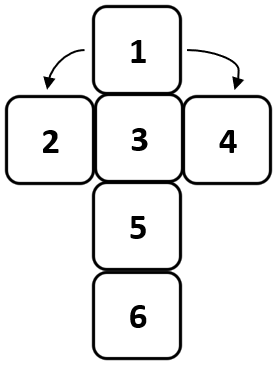 All these dices will be identical when folded.
All these dices will be identical when folded.
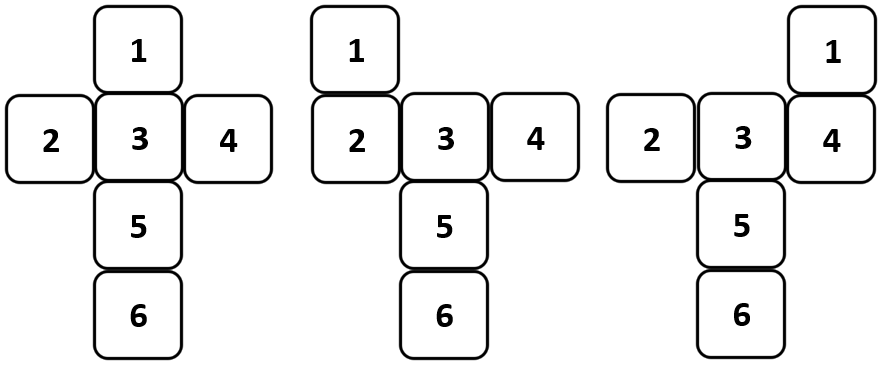
The tail (i.e. 6 in the given dice) can be attached to any face except the middle one.
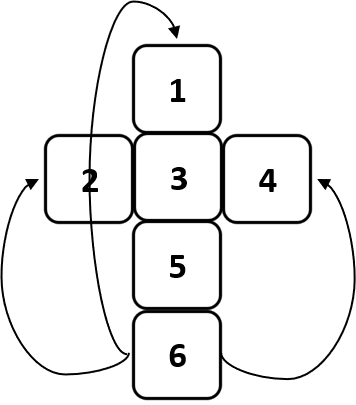 All these dices will be identical when folded.
All these dices will be identical when folded.

Q. Three views of the same cube are given. All the faces of the cube are numbered from 1 to 6. Select one figure which will result when the cube is unfolded.
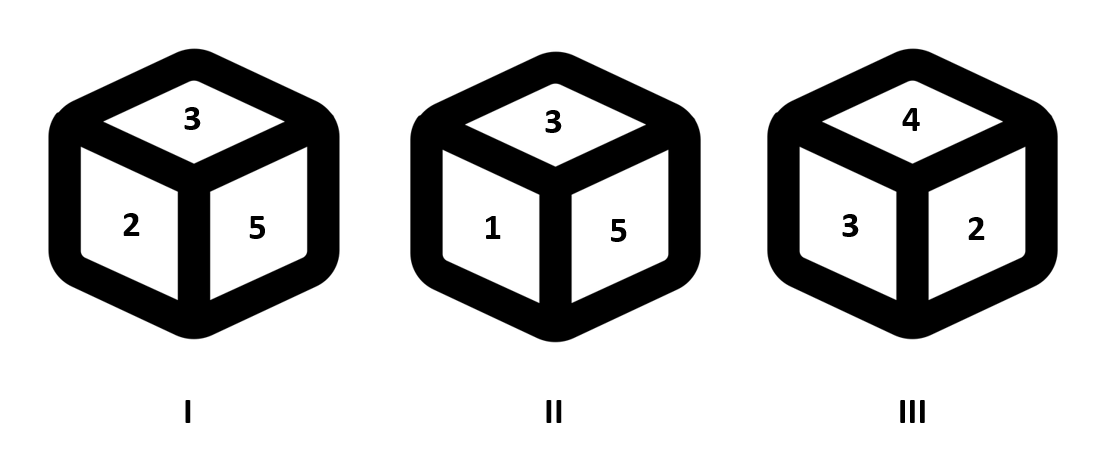
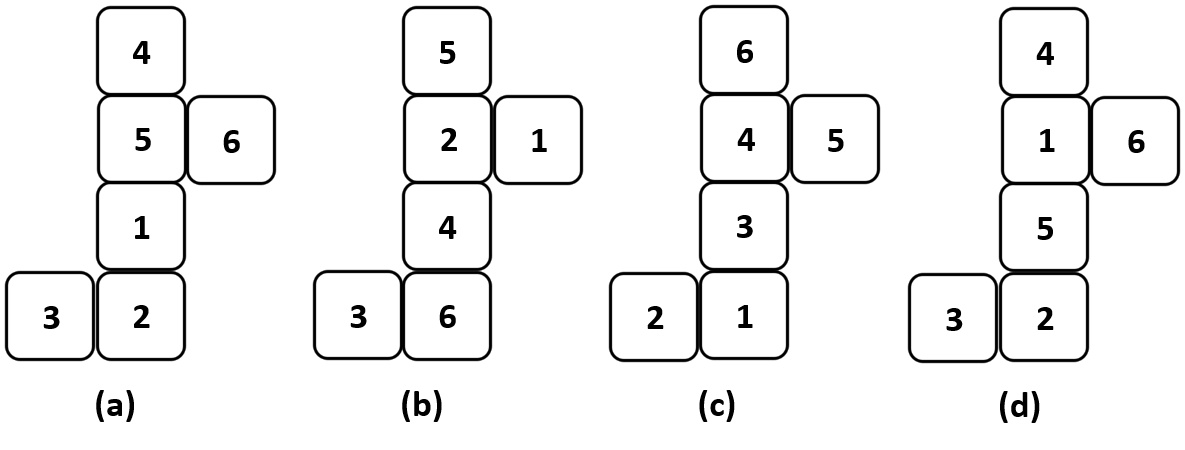
Explanation:
Opposite pairs: 5 - 4; 1 - 2 and 3 - 6
Now, if 1 and 2 are opposite faces, then in the unfolded dice they should not be adjacent. If they are in a straight line, then they will be placed alternately, i.e. some other face will be in between them.
On observing the options, we can see that in options (a), (b) and (c), 1 and 2 are shown as adjacent faces. So, these cannot be our dice.
The figure in option (d) shows 1 and 2 placed alternately in a straight line. So, they will be opposite when this dice is folded. We can also see that in this position 4 - 5 and 3 - 6 are also opposite.
So, when we will fold this dice, we will get the folded dice given in the question.
Answer: (d)